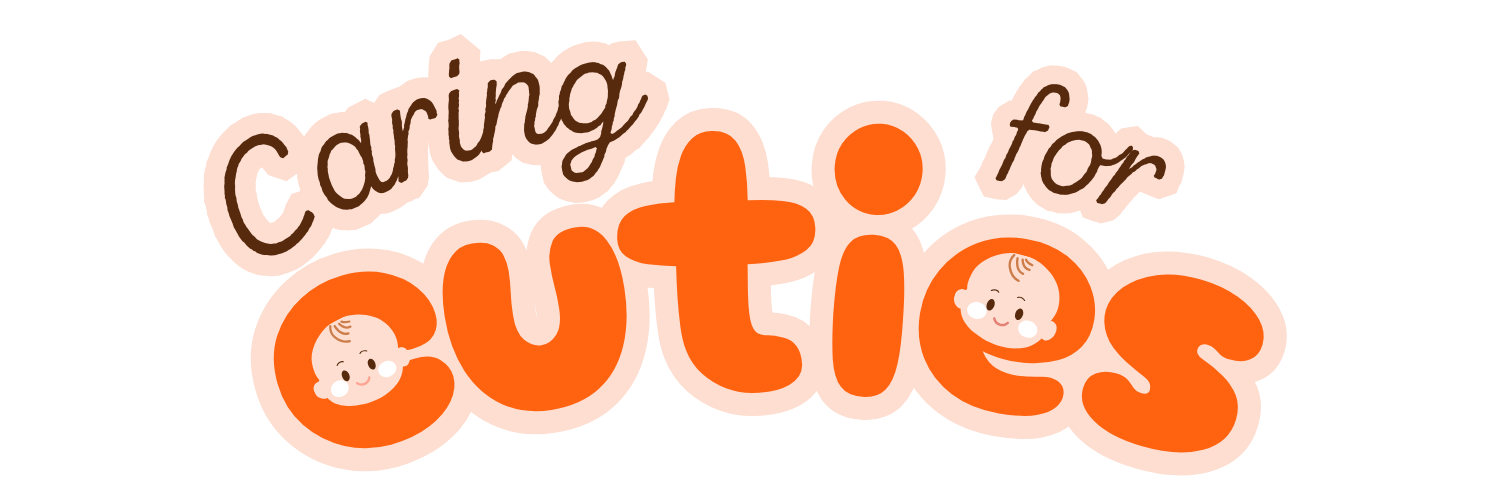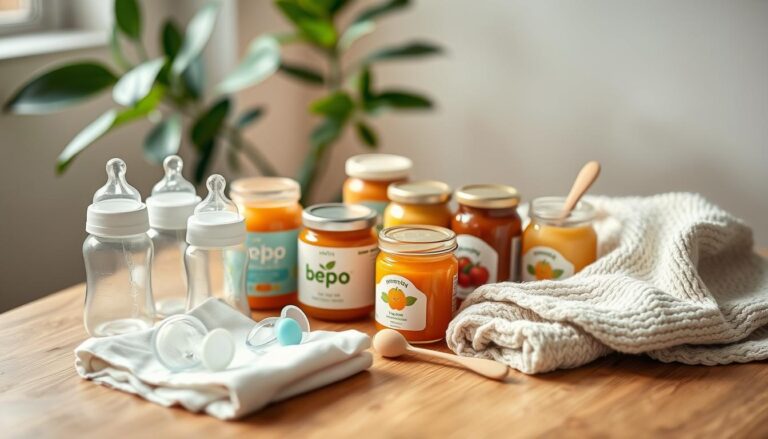Raising a child is one of the most rewarding yet challenging journeys in life. As parents, we often find ourselves balancing tradition with the ever-evolving world around us. The year 2025 brings new opportunities and challenges, making it essential to adapt while staying rooted in what truly matters.
From understanding the latest safety standards to fostering emotional intelligence, there’s so much to consider. How do we ensure our child thrives in a world filled with technology? How do we make the most of our time together while providing the best care? These questions are at the heart of every parent’s journey.
This article explores five key strategies to help you navigate the complexities of raising a child in 2025. Whether it’s managing screen time or focusing on developmental milestones, these insights will empower you to create a nurturing environment for your little one.
Key Takeaways
- Balance technology with traditional bonding techniques.
- Stay updated on safety standards like NHTSA car seat guidelines.
- Focus on CDC-recommended developmental milestones.
- Use tools like the Cosmo JrTrack 4 Smartwatch for screen time management.
- Incorporate emotional intelligence techniques into daily routines.
Introduction to Modern Parenting for Newborns
Bringing a baby home marks the beginning of a transformative chapter in your life. As parents, you’ll navigate new challenges while creating a nurturing environment for your child. The post-pandemic world has reshaped family dynamics, making it essential to adapt to these changes.
One key shift is managing visitors. Limiting exposure helps protect your baby’s health while allowing you to bond as a family. The American Academy of Pediatrics (AAP) recommends room-sharing to reduce the risk of SIDS by 50%. This simple step can make a big difference in your baby’s safety.
Immediate skin-to-skin contact is another crucial practice. According to WHO guidelines, this bonding technique promotes warmth, security, and breastfeeding success. It’s a powerful way to connect with your child from the very start.
The “fourth trimester” is a concept that emphasizes self-care for parents. This period focuses on recovery and adjustment, ensuring you’re at your best for your baby. Tools like the CDC’s “Learn the Signs. Act Early” tracking system can help you monitor developmental milestones with confidence.
Creating a safe sleep environment is equally important. Research from the NICHD highlights the importance of placing your baby on their back in a crib free of blankets, pillows, or toys. These small steps can significantly reduce risks and provide peace of mind.
| Key Practice | Benefit |
|---|---|
| Room-sharing | Reduces SIDS risk by 50% |
| Skin-to-skin contact | Promotes bonding and breastfeeding |
| Safe sleep environment | Minimizes risks of suffocation |
Essential Tips for Newborn Care
Caring for a newborn requires attention to detail and a focus on safety. From creating a secure sleep environment to understanding feeding options, every decision impacts your baby’s well-being. Let’s explore key practices to ensure your little one thrives.
Creating a Safe Sleep Environment
Newborns sleep for 16-17 hours daily, making a safe sleep space essential. The American Academy of Pediatrics (AAP) recommends placing your baby on their back to reduce the risk of sudden infant death syndrome (SIDS). Avoid soft bedding, pillows, or toys in the crib to prevent suffocation.

Swaddling can help your baby feel secure. Ensure the swaddle is snug but not too tight, allowing for hip movement. Room-sharing, as advised by the AAP, can lower SIDS risk by 50% during the first six months.
Feeding Your Newborn: Breastfeeding and Formula
Breastfeeding offers numerous benefits, including bonding and immune support. The CDC recommends storing breast milk at room temperature for up to 4 hours or in the fridge for 4 days. For those using formula, the FDA regulates hypoallergenic options to meet specific dietary needs.
Paced bottle feeding is a helpful technique for combination feeders. This method mimics breastfeeding, reducing overfeeding and gas. Whether you choose Medela or Spectra pumps, efficiency and comfort are key factors to consider.
As parents, understanding these practices ensures your baby’s health and happiness. Small steps, like proper swaddling or paced feeding, can make a big difference in their early development.
Navigating Car Seat Safety
Ensuring your baby’s safety on the road starts with the right car seat. According to the National Highway Traffic Safety Administration (NHTSA), using a properly installed car seat reduces the risk of fatal injury by 71% for infants. This makes it one of the most critical steps in protecting your child.
To verify your car seat installation, use the 866-SEAT-CHECK service. This free resource connects you with certified technicians who ensure your seat meets all safety standards. It’s a simple step that can provide peace of mind.
When installing a car seat, the Britax ClickTight system is a popular choice. Its step-by-step design ensures a secure fit. For rear-facing options, compare the Nuna Pipa and Chicco KeyFit. Both offer excellent safety features, but the Nuna Pipa is lighter, while the Chicco KeyFit is more budget-friendly.
Proper harness tightness is crucial. Use the coin test: if you can slide a quarter between the harness and your baby’s chest, it’s too loose. Tighten it until the quarter no longer fits. This ensures your child stays secure during travel.
Avoid common errors like using aftermarket inserts or bulky winter coats. These can compromise the seat’s effectiveness. Instead, dress your baby in thin layers and use a blanket over the harness for warmth.
Looking ahead, 2025 brings innovations like sensor alerts in car seats. These advanced features notify you if the harness is too loose or the seat isn’t installed correctly. Staying updated on these advancements ensures your baby’s safety evolves with technology.
| Car Seat Feature | Benefit |
|---|---|
| Britax ClickTight | Easy, secure installation |
| Nuna Pipa | Lightweight and portable |
| Chicco KeyFit | Affordable and reliable |
Bonding with Your Newborn
Building a strong connection with your baby is one of the most fulfilling parts of being a parent. The first few years are critical, with 90% of brain development occurring during this time, according to the CDC. Bonding not only strengthens your relationship but also supports your baby’s emotional and cognitive growth.

The Power of Skin-to-Skin Contact
Skin-to-skin contact, also known as kangaroo care, is a simple yet powerful way to bond with your baby. Research from the WHO shows it can reduce NICU stays by 3.5 days and improve overall health. This practice promotes warmth, security, and even breastfeeding success.
Babywearing is another effective method. Products like Ergobaby and Moby wraps allow you to keep your baby close while freeing your hands. This not only meets their needs for closeness but also helps you stay active and engaged.
Communicating with Your Newborn
Early communication sets the stage for language development. Baby sign language basics can help your baby express their needs before they can speak. Tools like the Owlet Smart Sock and Nanit camera also enhance bonding by providing real-time updates on your baby’s well-being.
Did you know your voice plays a key role? NICHD research highlights that babies recognize their father’s voice early on. Singing or talking to your baby fosters connection and comfort. The Hatch Rest sound machine can introduce musical exposure, creating a calming environment for sleep and play.
- Use skin-to-skin contact to promote bonding and health.
- Explore babywearing options like Ergobaby and Moby wraps.
- Teach baby sign language for early communication.
- Monitor your baby’s well-being with Owlet or Nanit.
- Incorporate music and voice recognition for emotional connection.
Managing Visitors and Family Time
Welcoming visitors while prioritizing your baby’s safety is a delicate balance. The first eight weeks are crucial, and the American Academy of Pediatrics (AAP) recommends limiting gatherings to fewer than 10 people. This helps reduce exposure to germs and ensures your baby stays healthy.
Creating a digital visitation schedule using the Cozi app can simplify things. It allows you to manage visits without overwhelming your family. Clear communication is key, and sharing CDC vaccination requirements for visitors ensures everyone is on the same page.
Implementing a “no kiss” policy is another essential step. Educational infographics can help visitors understand the importance of this rule. It’s a simple way to protect your baby from harmful germs.
Curating grandparent education packets is a thoughtful gesture. Include updated safety guidelines to help them feel confident and informed. Designating sanitization stations with Touchland misters adds an extra layer of protection for your family.
Postpartum boundary scripts can make assertive communication easier. These scripts help you set clear expectations without feeling guilty. Remember, your baby’s health and your time as a parent are top priorities.
- Use the Cozi app to manage visitation schedules.
- Share CDC vaccination requirements with visitors.
- Implement a “no kiss” policy with educational infographics.
- Create grandparent education packets with safety guidelines.
- Set up sanitization stations with Touchland misters.
Health and Hygiene for Newborns
Keeping your baby healthy and clean is a top priority for every parent. Proper hygiene practices not only protect your little one from germs but also promote their overall well-being. From bathing to monitoring their health, these simple steps can make a big difference.
Bathing and Grooming Tips
Bathing your baby doesn’t have to be stressful. The FDA reports that 98% of baby shampoos meet pH balance standards, ensuring they’re gentle on your baby’s skin. Brands like Mustela and Aveeno offer excellent skincare regimens tailored for newborns.
When it comes to grooming, pay attention to the umbilical cord. The AAP notes it typically falls off within 10-14 days. Keep the area clean and dry to prevent infection. For nasal congestion, the FridaBaby NoseFrida is a safe and effective tool for clearing your baby’s airways.
Monitoring Your Baby’s Health
Tracking your baby’s health is essential for early detection of any issues. The Kinsa Smart Thermometer is a great tool for monitoring fevers. It syncs with your phone, providing real-time updates and guidance.
Diaper rash is a common concern. The Honest Company offers products designed to prevent and treat this issue. For diaper disposal, compare the Ubbi and Dekor pail systems. Both are hygienic, but the Ubbi is odor-locking, while the Dekor is more compact.
- Choose pH-balanced shampoos like Mustela or Aveeno.
- Keep the umbilical cord area clean and dry.
- Use the FridaBaby NoseFrida for nasal congestion.
- Monitor fevers with the Kinsa Smart Thermometer.
- Prevent diaper rash with The Honest Company products.
Developing a Routine
Establishing a consistent routine for your baby can make life easier for everyone in the family. A predictable schedule helps your little one feel secure while giving you a sense of control. From sleep patterns to feeding times, small adjustments can lead to big improvements.
Establishing a Sleep Schedule
Newborns need plenty of rest, but their sleep patterns can be unpredictable. The CDC recommends 8-12 feedings every 24 hours, which often disrupts nighttime rest. By the age of nine months, the AAP notes that most babies achieve sleep consolidation, meaning they sleep longer stretches at night.
Tools like the Huckleberry app can help you create sample schedules tailored to your baby’s needs. For those struggling with sleep, the SNOO Smart Sleeper offers rental options designed to soothe and calm your baby. These resources can make a significant difference in establishing a healthy sleep routine.
Balancing Feeding and Playtime
Feeding and playtime are essential parts of your baby’s day. The Baby Brezza and Kiinde feeding systems are popular choices for simplifying meal prep. Both options save time while ensuring your baby gets the nutrition they need.
Incorporating tummy time is equally important. The Lovevery gym provides a safe space for your baby to explore and strengthen their muscles. Baby-led routine adjustment techniques allow you to adapt to your baby’s natural rhythms, making the process smoother for everyone.
- Use the Huckleberry app to create personalized schedules.
- Compare Baby Brezza and Kiinde for efficient feeding.
- Introduce tummy time with the Lovevery gym.
- Explore baby-led routine adjustment techniques.
- Consider renting the SNOO Smart Sleeper for better sleep.
Conclusion
As you step into 2025, staying informed and prepared is key to nurturing your child’s growth. Smart nursery technology, like AI-powered monitors, can simplify daily routines while ensuring safety. Adhering to the CDC vaccination schedule is essential for protecting your little one’s health.
For future nutrition, the USDA MyPlate guidelines offer a balanced approach to feeding. Pair this with NICHD-certified safe sleep practices to create a secure environment. These steps ensure your child thrives in every stage of life.
Remember, parenting is a journey that requires support. If you ever feel overwhelmed, resources like Postpartum Support International are here to help. By focusing on your child’s needs and staying updated on best practices, you’re setting the foundation for a bright future.
FAQ
How can I create a safe sleep environment for my newborn?
Always place your baby on their back to sleep, use a firm mattress, and keep the crib free of pillows, blankets, and toys. Follow the American Academy of Pediatrics guidelines to reduce the risk of sudden infant death syndrome (SIDS).
What are the best feeding options for my newborn?
Breast milk is the ideal choice, as it provides essential nutrients and antibodies. If breastfeeding isn’t possible, formula is a safe alternative. Consult your pediatrician to ensure your baby’s nutritional needs are met.
How do I ensure my baby’s car seat is safe?
Choose a car seat that meets National Highway Traffic Safety Administration (NHTSA) standards. Install it rear-facing in the back seat and ensure it’s securely fastened. Regularly check for recalls or expiration dates.
Why is skin-to-skin contact important for newborns?
Skin-to-skin contact helps regulate your baby’s temperature, heart rate, and breathing. It also strengthens the bond between parent and child, promoting emotional security.
How can I manage visitors while caring for my newborn?
Set clear boundaries and limit visits to ensure your baby’s health and your rest. Ask guests to wash their hands and avoid visiting if they’re unwell. Prioritize your family’s needs during this time.
What are some essential hygiene tips for newborns?
Bathe your baby 2-3 times a week using warm water and mild soap. Keep their nails trimmed, clean their diaper area thoroughly, and monitor for signs of rashes or infections.
How do I establish a sleep schedule for my newborn?
Create a consistent bedtime routine, such as a warm bath or lullaby. Keep the room dark and quiet at night. Be patient, as newborns need time to develop a regular sleep pattern.
How can I balance feeding and playtime with my newborn?
Feed your baby on demand and use awake times for gentle play or interaction. Follow their cues to avoid overstimulation and ensure they get enough rest.





